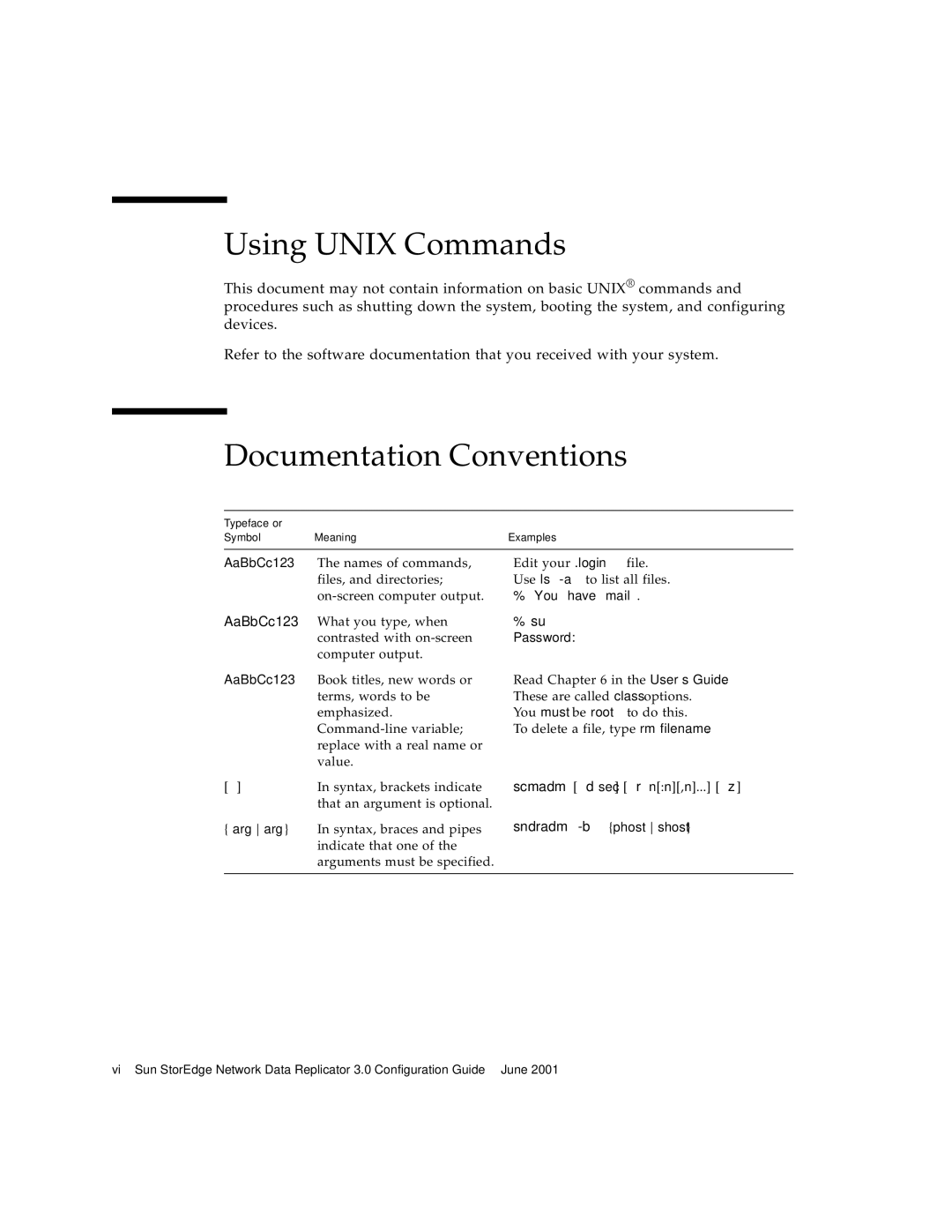
Using UNIX Commands
This document may not contain information on basic UNIX® commands and procedures such as shutting down the system, booting the system, and configuring devices.
Refer to the software documentation that you received with your system.
Documentation Conventions
Typeface or |
|
|
Symbol | Meaning | Examples |
AaBbCc123 | The names of commands, |
| files, and directories; |
| |
AaBbCc123 | What you type, when |
| contrasted with |
| computer output. |
AaBbCc123 | Book titles, new words or |
| terms, words to be |
| emphasized. |
| |
| replace with a real name or |
| value. |
[ ] | In syntax, brackets indicate |
| that an argument is optional. |
{arg arg} In syntax, braces and pipes indicate that one of the arguments must be specified.
Edit your .login file.
Use ls
%You have mail.
%su
Password:
Read Chapter 6 in the User’s Guide. These are called class options.
You must be root to do this.
To delete a file, type rm filename.
scmadm
sndradm
vi Sun StorEdge Network Data Replicator 3.0 Configuration Guide • June 2001
